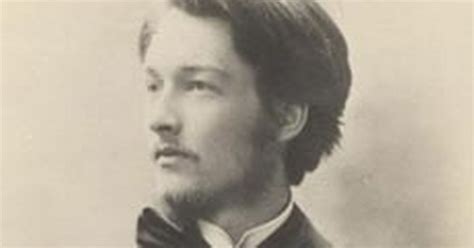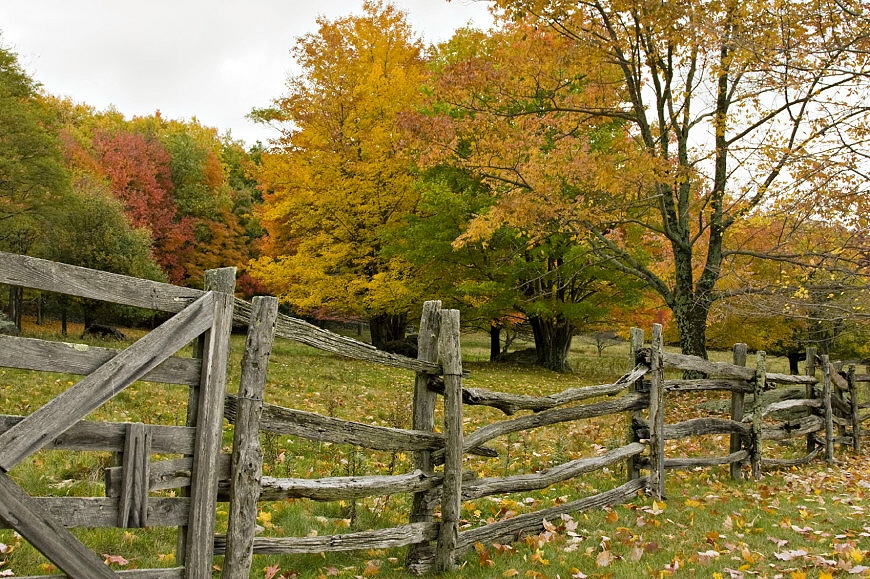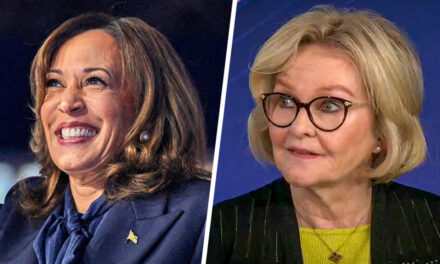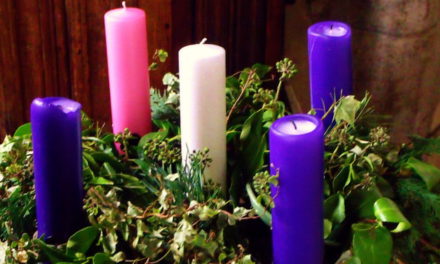The topic of poetry dominates Maritain’s aesthetic writings after Art and Scholasticism. Poetry is the basis of the human urge to create, “the intercommunication between the inner being of things and the inner being of the human self” (CI 3). Maritain’s development of this idea, as well as the softening of his attitude toward modern art, can be traced from The Frontiers of Poetry and the letter to Cocteau (Art and Faith: Letters between Jacques Maritain and Jean Cocteau, 1948) through several articles written in the 1930s to its culmination in Creative Intuition.
This shift of focus, from art and beauty to poetry and creativity, represents a deepening of his original emphasis on the virtue of art. It would be a mistake to overlook the basic continuity in the development of Maritain’s aesthetics from 1920 to 1953, even through several articles written in the 1930s to its culmination in Creative Intuition. This shift of focus, from art and beauty to poetry and creativity, represents a deepening of his original emphasis on the virtue of art. It would be a mistake to overlook the basic continuity in the development of Maritain’s aesthetics from 1920 to 1953, even though his increasing preoccupation with the creative self (or subject) appears to be at odds with both his repudiation of modernism and his promotion of the perennial philosophy of St. Thomas Aquinas.
Neither conflict is substantial, but both reveal a significant tension in Maritain’s aesthetics. As he turns toward the “subject,” Maritain’s guide is still Saint Thomas, but he is joined by the same modern artists and poets whose pride instigated Maritain’s search to recover “the conditions of honest work.”
Although Maritain delves into the creative self in search of poetry, he does not alter his original approach of working from God as the prime analogue of all aesthetic concepts. He writes to Jean Cocteau that poetry is “the highest natural resemblance to God’s activity. . . . [B]ut in order to have some idea of its nobility one must call to mind the mystery of the procession of the Word” (AF 89). Poetic knowledge is fecund; it wants to overflow into a work. “Just as God makes created participations of His essence to exist outside Himself, so the artist puts himself—not what he sees, but what he is—into what he makes” (FP 126).
Poetry exists first of all in God, as do art and beauty. Maritain writes, “One is always severely punished for forgetting the metaphysical transcendence of poetry, and for forgetting that if in the work of Creation the Word was art, the Spirit was poetry,” adding a favorite quote from Baudelaire, “ ‘Because Poetry, my God, its you’ “ (FP 134). God knows the world, and thus his poetry, entirely within himself, while human poetry expresses an inner and spiritual connection between a creative subject, his world, and the thing to be made.
Poetry bestows upon art something analogous to the effect of grace upon the moral life; it is the principle of spirituality for the artist (FP 129). The laying bare of his principle was not without its heroes—Cézanne, “so obdurately and desperately intent on that bound, buried significance of visible things” (CI 30); its dangers—Picasso, “each moment he brushes against the sin of angelism” (FP 131); and its fatalities—Rimbaud “is silent” (FP 130) and Duchamp “is now playing chess in New York” (CI 215).
Maritain did not remain above the particulars, safely wrapped up in a theory of modern art; he knew the individual artists and their works and attempted to discern the individual spirits behind the labels. He recognized very early that in the spiritual recesses of modern poetry a “battle is being waged between the good and bad angels, and the bad angels are disguised as messengers of light” (FP 130).
The modern artist was being crushed under the burden created by the self-consciousness of his poetry. The ability of Rouault to resist compromising his artistic conscience, that is, to work honestly, was part of what prompted the writing of Art and Scholasticism (Raïssa Maritain, We Have Been Friends Together, 127). Rouault, one might say, did not look around but painted entirely for himself, even when his friend Léon Bloy pronounced his work too bourgeois.
Maritain did not agree, thinking instead that Rouault was one of the few modern artists who could “reconcile freedom white the beauty of forms.” (WHB 129). Maritain takes his example from Rouault, who drew artistic freedom from his spirituality. In The Frontiers of Poetry Maritain writes,
“Religion alone can help the art of our epoch to keep the best of its promises . . . by putting it in a position to respect its own nature and true place. For it is only in the light of theology that art today can achieve self-knowledge and cure itself of the false systems of metaphysics which plague it. By showing us where moral truth and the genuine supernatural are situated, religion saves poetry from the absurdity of believing itself destined to transform ethics and life, saves it from overweening arrogance. But in teaching man the discernment of immaterial realities and the savor of the spirit, in linking poetry and art itself to God, it protects them against cowardice and self-abandonment, enables them to attain a higher and more rigorous idea of their essential spirituality”(FP 139; emphasis mine).
Maritain’s evangelical intent could not be stated more clearly. Notice that he does not suggest that religion provide the subject matter for art but the self-understanding of the artist. For those who might recoil at such a prospect, it should be said that the freedom of the artist of Maritain’s paramount concern. Maritain sees art, the artist, and all aesthetic matters in an analogical relation to God that preserves their freedom. This does not deprive the aesthetic of its “essential spirituality,” but rather allows it to be expressed regardless of a work’s subject. Maritain had very little to say about the “religious” art (containing a religious subject) of his day, and most of his comments were negative.
Yet, artists can use their freedom to sin. A special affinity with the spiritual provides them the occasion for assuming the place of the absolute creator. For Maritain, to accept the role of the creature, with its attendant limitation, is the heart of realism. Medieval artists knew themselves well, while modern artists have created a false identity. “Get to know yourself so well that you will be able to look at yourself without flinching. Then there will be room for hope” (FP 143).
To work honestly once again, artists must give up their pretensions about doing the work of a philosopher or the priest and be content once again with making beautiful things. Honest work will also preserve the integrity of artists by protecting their freedom from the incessant demands of human life. Artists must learn to forget themselves for the sake of beauty. In the opening chapter of Art and Scholasticism, Maritain writes,
“Hence the tyrannical and absorbing power of Art, and also its astonishing power of soothing; it delivers one from the human; it establishes the artifex—artist or artisan—in a world apart, closed, limited, absolute, in which he puts the energy and intelligence of his manhood at the service of the thing he makes. This is true of all art; the ennui of living and willing ceases at the door of every workshop” (AS 9; first emphasis mine).
The artist’s detachment from the demands of the human world is a theme that Maritain repeatedly strikes in his aesthetic writings. Is “angelism,” a repudiation of an embodied, human life, being recommended here? No, for a while artists must work beyond themselves, forgetting the human, they do so for the sake of the human. It will be “the human,” finally, that is served by the beauty that the artist creates. Artists step out of themselves to create the work; viewers step out of themselves to delight in its finite beauty, which in turn, creates a longing for perfect beauty. It appears that Maritain has imbued his notion of Christian spirituality, specifically the “going forth” of divine love, into his view of the artist’s work. And, in doing so, he succeeds in placing a circle of ecstasy at the heart of his aesthetics, whether in art or beauty or the correspondence that each bears to God. It is ironic that the idea of artistic ecstasy was suggested to him by two sources, each dear to him but so far apart, the medieval Schoolmen and modern poets and painters.
The exclusive devotion to the work distinguises art from prudence. Both virtues belong to the practical intellect, but prudence serves the human good, while art serves the good of its work. Maritain insists on the freedom of the artist from the restraints of moral considerations. Raïssa and Jacques experienced their “first violent difference” over this same question. Raïssa thought the subject of Rembrandt’s “Butcher Shop”—a flayed steer—too vulgar to enjoy. Jacques thought the painting no less great than Rembrandt’s other works. “This disagreement was intolerable to us. . . . Thus began our reflections on art” (WHB 45).
His battle for the freedom of the artist from the demands of prudence began with no less formidable an opponent than his future wife. One imagines that Raïssa, given her self-confessed stubbornness, was difficult to dissuade. How remarkable that a young man with such earnestness for social reform and Catholic truth would simultaneously protect the artist from moral and religious judgment of his art! This assertion of artistic freedom is consistent with the analogy Maritain makes between the artist and the freedom of God as Creator. The artist should not be bound in his making by moral expectations of his audience; he should not be found morally culpable as an artist: “If he [the artist] is angry or jealous, he sins as a man, he does not sin as an artist” (AS 15).
To be burdened by moral considerations would be an abdication of freedom, a giving up of the transcendent perch over the human, which the artist enjoys, and a rejection of his spiritual privilege. Maritain insists on a distinction between “the artist qua artist” and “the artist qua man.” Although this way of speaking sounds clumsy, it protects the artist from the prudent man in his audience as well as from his own conscience, which may take aim at his work. At the same time, he never forgets the artist is also human and must, for the sake of happiness, cultivate moral virtue. The moral dilemma of the artist is paradoxical: the set aside personal and social considerations, no matter how noble, for the sake of art. The possibility of conflict, however, is perennial: think of Plato’s Republic, Calvin’s Geneva, and the legal trials of Gustave Flaubert, D.H. Lawrence, and James Joyce.
“The ethics of art,” the rubric by which Maritain eventually designated this issue, was always important, though somewhat adjunct, to his developing views of art and creativity. Both Chapter 9 of Art and Scholasticism and a series of lectures given at Princeton in 1951 address the same problem: if art and morality are autonomous spheres, how are they to be reconciled, since they must exist within the same human subject (TRA 22) — “Unhappy the artist with a divided heart!” (AS 70). Artists must subordinate their art to their humanity. If happiness, as the final end of the artist, is not of greater importance to him that his work then he is guilty of idolatry: “there is no good against the good of human life” (TRA 39). Even so, this is an “extrinsic and indirect subordination” (TRA 22) of art to morality and in no way is intended to shackle the imagination of the artist.
In other words, Maritain opposes any moral judgments imposed on a work of art by the audience in the form of thinly veiled preaching. Yes, an artist’s moral character will show through a work; therefore, if an artist wants his art to serve the cause of human happiness, then the best he can do is, in François Mauriac’s words, “purify the source.” Though they may be applauded by the prudent man, artless gestures such as adopting an ideological posture or choosing religious subjects are a dishonest and easy way to resolve the tension between art and morality without suffering interior reform.”
Beauty stands free of morality and the human good, and it is this very freedom that human life needs from the experience of beauty. The artist defends beauty against the moral judgments of those who count themselves on the side of humanity. Again Maritain views the situation of the artist analogously to that of the saints in their heroic service to the supreme good. Artists must have the virtues of the saint but “in a certain relation, and in a line apart, extra-human if not inhuman [good]” (AS 78).
The artist qua artist stands outside of the human good, which is precisely the angle from which he can make his contribution to the human life, He offers us an opportunity for a “disinterested activity” in the beauty he creates. The enjoyment of beauty frees us—albeit momentarily— from our entrapment in the “system of nothing but the earth” (AS 37). Through aesthetic delight, we gain a portion of the freedom the artist knows in his making, a taste of his ecstasy. An entire aesthetics of contemplation still waits to be constructed from Maritain’s insights.
The disinterestedness of art shows an affinity with wisdom; both are ordered toward an end that is beyond man, not to be used as a means but sought as an end. “Their whole value is spiritual, and their mode of being is contemplative” (AS 34). This resemblance of the artist to the philosopher can be extended to the exertions of the saint. As Maritain writes to Cocteau, “art is un-human, as sainthood is super-human. From this come all the analogies I have spoken of” (AF 96-97).
The Maritains found in the gesture of ecstatic self-denial the intersection of their love of wisdom with their love of God and love of beauty. But what can meet and mix is not necessarily equal. Jacques and Raïssa willingly sacrificed the “mad love” (amour fou) they discovered for each other as students at the Sorbonne and embraced, as already mentioned, a mariage blanc to love God above all else. Amour fou can only be directed toward one object. Thus, for Maritain, art, and wisdom, like human love, are directed to their respective objects through God. Whatever the resemblance between the philosopher, the artist, and the saint, there is no doubt whose vocation is higher.
The many friendships the Maritains enjoyed with artists bore their theory out in practice. Jacques insists that artists and contemplatives share very similar spiritual trials. Each, in distinctive ways, suffers being stripped of the human. The artist, however, must endure this “Jacob’s Night” without the special graces given to the saint. He “must wear himself out among bodies and live with the spirits” (AS 34). Again, this is not to recommend angelism but to recognize the suffering required to preserve the love and freedom of the artist in the service of the beautiful.
The analogy between the artist and the saint extends beyond a common sacrificial devotion to the object of their love. The poet, consciously or not, is “an apprentice of the creator” (AF 87). Just as the saint’s life may provide a witness beyond itself, so too the beauty created by the artist becomes, in Baudelaire’s terms, a correspondance with divine goodness. Thus, the poetry that stimulates the artist to create also “gives us, without knowing it, a foreshadowing, an obscure desire for the supernatural life” (AF 90). The artist, suspended between two worlds, is afflicted with an unavoidable spirit in consciousness.
As Maritain writes to Cocteau,
“Poetry, too, imposes the narrow road, it presumes a certain sacred weakness—beauty limps, you say, and Jacob limped after his struggle with the angel, and the contemplative limps in one foot, says Saint Thomas, for having known God’s sweetness he remains weak on the side that leans on the world. In one sense poetry is not of this world, it is in its way a sign of contradiction; its kingdom also is in our midst, within us” (AF 91).
The sanctity of artists consists in their bearing this contradiction without escaping into an illusory aesthetic religiousness of mechanical academicism. The artist exists in the “tragic condition” of imitating the creativity of God by freely (though not in the absolute sense of God) making what does not yet exist but without receiving from his work any spiritual relief. He works toward “an end that is not his end” (AF 93). “Beauty limps” because the artist can only intimate the life of the spirit and create a beauty that provokes a desire it cannot satisfy alone. To ordain themselves into a kind of pseudo-priesthood is the perennial temptation of the poets, to which they
With his aesthetic theory Maritain seeks to purge art of its “priestly” claims by clarifying basic aesthetic concepts. His undertaking clearly depends upon the analogical relation of these terms to God—the Supreme Artist, the First Poet, the Absolute Creator, Beauty Itself. The trick for the artist is to remain within the analogical tension. No wonder Maritain praised Cocteau for his “tightrope esthetics” (AF 76)—Maritain’s own are hardly different.
Maritain never changes this posture, although some might argue that Creative Intuition in Art and Poetry represents a significant departure from his earlier one. Most noticeable is the change in rhetoric. Creative Intuition contains fewer of the passionately elaborated analogical illustrations that spice the text of Art and Scholasticism. Compare, for example, his treatments of art and beauty and the difference becomes apparent.
This does not signal a change in Maritain’s mind concerning the roots of his aesthetic theory but, rather, a change in his age and his audience. The shift in tone can be easily understood as reflecting the difference between a young convert to Catholicism and Thomism seeking to rally French intellectuals, and an established philosopher addressing an international audience as the first Mellon Lecturer at the National Gallery in Washington, DC.
Creative Intuition also contains much that is new, in it Maritain discusses non-Western art and aesthetics. His discussion of the creative intuition in the preconscious intellect, however, marks the decisive and final step in the development of his aesthetics. It had been suggested that these new concerns hinted at a change in Maritain from his “aesthetics-from-above approach” to an “aesthetics-from-below,” which never materialized. This is true. Maritain never gave up his theologically based, analogical description of aesthetic terms.
Maritain’s interest in Oriental and Indian culture was not new for him. His friends Olivier Lacombe and Louis Gardet exposed him and the Meudon study circle to a great deal of Eastern thought and culture. Proof of his familiarity with non-Western traditions had been evidenced in Maritain’s books for several decades before Creative Intuition. His greatest appreciation is for non-Western forms of mysticism rather than their art. His treatment of non-Western art in the first chapter of Creative Intuition serves primarily as an illustrative counterpoint to the revelation of the self, which Maritain finds gradually emerging in the history of Western art.
End of Part Two














